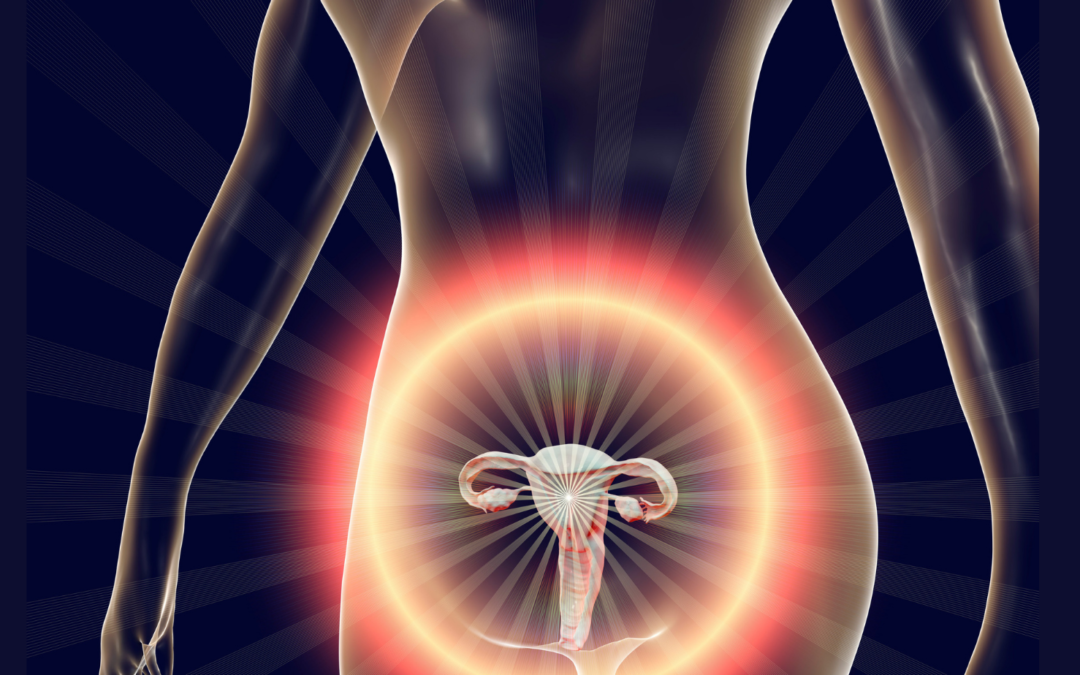There are many things we look at as part of your fertility story, one of those being endometrial receptivity, and an endometrial receptivity test can help work out if the lining of the womb is receptive to an embryo when we transfer it.
The window of Implantation
A shield of glycoproteins (proteins with finger-like sugar projections) lines the surface of the lining of the womb. These glycoproteins protect the endometrium from damage and infection, but prevent an embryo attaching and burrowing into the lining of the womb. For most of the menstrual cycle, this shield is present, and the endometrium is not receptive for an embryo.
In the window of implantation, this glycoprotein shield disappears and an embryo in the uterine cavity can directly interact with receptors on the cells that line the womb. This allows the embryo to attach, and burrow into the lining, nestling in to establish a blood supply with all the nutrients it needs.
Why don’t embryos implant?
There are lots of reasons why embryos don’t implant. We think about 70% of the time it is because the chromosomes of the embryo are in the wrong place. Chromosome changes occur when eggs have been damaged over time and occurs more often when women are in their 40s (see our article on genetic testing). The best way of managing this is to test the chromosomes and only transfer embryos with normal chromosomes.
What things can go wrong with the endometrium?
We are still learning a lot about the endometrium as, until we become skilled at testing chromosomes of the embryo, we couldn’t really be sure if the lining of the womb had a problem. There are four main things that can cause endometrial receptivity.
Problems:
- The timing of the window of receptivity is not synchronised with the embryo.
- There are antibodies/immune problems that make it hard for the placenta to develop and grow.
- There are metabolic factors that cause an inflammatory environment.
- There are structural/anatomical changes that make it hard for an embryo to implant.
What does the endometrial receptivity test do?
The endometrial receptivity test can help work out if the lining of the womb is receptive to an embryo when we transfer it. We arrange for a “dummy run” cycle just the same as the cycle we plan to transfer a frozen embryo in (we can only use frozen embryos if we are timing to the endometrial receptivity test). Instead of transferring an embryo, we take a sample of the lining of the womb. We can use a small plastic catheter (pipelle) in an outpatient setting or we can take the sample under anaesthetic at a hysteroscopy (telescope in the womb) if we want to check the uterine cavity for adhesions or polyps. This sample is then processed, and the mRNA amplified. The levels of about 280 mRNAs can tell us if the lining is pre-receptive, receptive or post-receptive. We get this report from the company that provides the test. If the sample is receptive then we transfer the embryo in exactly the same cycle, at the same time we did the biopsy. If it is pre-receptive or post-receptive, we transfer the embryo in exactly the same cycle, but one day later or earlier (respectively) than the day the sample was taken in the dummy run cycle.
When do we decide to do an endometrial receptive test?
We usually choose to do the endometrial receptivity test when we have been transferring high quality embryos that have not implanted. Additionally, if we have embryos that we have struggled to create and they will be hard to replace. For example, when an egg donor has been involved or when we have only one genetically normal embryo.
One of the groups who makes the test undertook a large multi-centred trial in healthy young couples. It was more cost effective to transfer a fresh embryo in this age group and there were no differences in any outcomes except cumulative live birth rate. This study unfortunately was underpowered to detect smaller differences in outcomes as there was a larger than expected dropout rate.
Retrospectively, another independent study reviewed pregnancy outcome in women in their first IVF cycles, who had genetically tested normal embryos, who had or had not chosen to use the endometrial receptivity test. They did not find any differences in pregnancy outcomes in this good prognosis group. These studies the endometrial receptivity test provides most benefit for people have been struggling with implantation after several embryo transfers.
How much does it cost?
There are two companies that provide the endometrial receptivity test: IVI genomics in Spain and Copper’s Surgical ER Peak test in the USA. The cost is between $1200-$1500 depending on the exchange rates. There are some additional fees for cycle tracking and the endometrial biopsy.
Are there any other tests in development?
Professor Louise Hull has collaborated with Professor Guiying Nie from Monash and RIMT Universities in Victoria. Professor Nie has identified a glycoprotein called Podocalyxin that is part of the glycoprotein shield that protects the endometrium. There is good evidence that this marker is absent only during the window of implantation and that its absence is associated with attachment and implantation of embryos to epithelial cells. Women who had embryos transferred when the lining of the endometrium did not express podocalyxin in the window of implantation had higher pregnancy rates. Podocalyxin may be a marker that can be developed as a more simple and cost effective receptivity test in the future.
In Summary
An endometrial receptivity test can identify a shift phase in the window of implantation that may make it difficult for food embryos to implant. We can correct these changes by changing the timing of implantation that may make it difficult for good embryos to implant. We can correct these changes by changing the timing of embryo transfer in a frozen embryo transfer.
For good prognosis patient who are in their first cycles of IVF, it is more cost effective to transfer fresh embryo without using this test. For patients who have had a lot of treatment and have struggled to conceive, this can sometimes be the key to helping them have a baby.
S G Paule, S Heng, N Samarajeewa, Y Li, M Mansilla, A I Webb, T Nebl, S L Young, B A Lessey, ML Hull, M Scelwyn, R Lim, B Vollenhoven, L J Rombauts, G Nei. Podocalyxin a key negative regulator of human endometrial epithelial receptivity for embryo implantation. Human Reproduction, 2021 Apr 20;36(5):1353-1366. doi: 10.1093/humrep/deab032
S Heng, N Samarajeewa, A Aberkane, W Essahib, H Van de Velde, M Scelwyn, ML Hull, B Vollenhoven, LJ Rombauts, G Nie. Podocalyxin inhibits human embryo implantation in vitro and luminal podocalyxin in putative receptive endometrium is associated with implantation failure in IVF. Accepted in Fertility Sterility.

